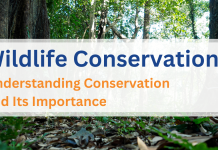#Commit to Quit
World No Tobacco Day also known as Anti Tobacco Day is observed on May 31 every year. In many parts of the world, people recognize this day to give tobacco users a new opportunity to determine and live a healthier life. According to the World Health Organization (WHO), “When the media highlighted that smokers were more prone to COVID-19 and have a chance to develop the severe disease compared to non-smokers, it alarmed millions of smokers to quit tobacco.”
World No Tobacco Day aims to spread awareness about the life threatening dangers of using tobacco. It also focuses on how quitting tobacco can help doctors better treat or prevent a variety of health problems. The WHO quotes, ”Today can be Day 1” in an endeavour to quit tobacco.
World No Tobacco Day 2021: Theme
This year the theme of World No Tobacco day 2021 is: Quit tobacco to be a winner. There are numerous campaign materials that can be used to inform people about the dangers of smoking. You can also use the hashtag #CommitToQuit on Twitter and other social media platforms and share photographs and ideas of what can be done in our neighborhoods to assist smokers quit smoking.
World No Tobacco Day 2021: Launch of “Commit to Quit” Marathon
The World Health Organization has launched a global campaign to be held on May 28, 2021 to celebrate World No Tobacco Day 2021 under the slogan “Commit to Quit.” The campaign’s goal is to help 100 million people quit smoking using a variety of activities and digital tools. This can aid in the creation of healthier conditions that promote tobacco cessation by:
- supporting robust tobacco cessation policies
- Increasing the availability of smoking cessation services
- raising awareness of the tobacco industry tactics
- helping people who want to quit tobacco via Quit and Win initiatives
Purpose: To launch the “Commit to Quit” marathon in Uzbekistan to improve access to cessation services.
Organizers of the campaign: Ministry of Health of the Republic of Uzbekistan , WHO Country Office in Uzbekistan , UN Uzbekistan Resident Coordinator’s Office, “Phenomenon” Medical Students Association, Ibn Sino Public Found
Introduction to Tobacco
Tobacco use has a long list of side effects. Tobacco is responsible for 8 million deaths each year. Quitting can be difficult, especially given the pandemic’s additional social and economic hardship. 60 percent of the world’s 1.3 billion tobacco smokers have stated a wish to quit, yet only 30 percent have access to the tools they need to succeed.
Alarming Situation: #1.3billion tobacco addicts, #8million deaths per year due to tobacco, #16million suffered due to disease caused by smoking.
What is Tobacco?
Tobacco is a plant originally native to the United States which is now grown across the world. Its leaves contain high concentrations of the psychoactive substance nicotine and many cancer-causing chemicals, especially polyaromatic hydrocarbons (PAHs). The intake of the leaves can be through smoke (in cigarettes, cigars, and pipes), chew (as dipping and chewing tobacco), or inhale (as snuff). Nicotine is extracted from the leaf and nowadays it’s used to create new nicotine products, like ecigarettes. Many institutes are using ecigarettes as Nicotine Replacement Therapies to treat tobacco addiction. Tobacco use and passive tobacco smoke are associated with a variety of cancers, as well as cardiac, lung, and other diseases.
Over the last 50 years, tobacco production has shifted from high to low and medium human development index (HDI) countries. Many people think of tobacco as a cash crop, but studies in several countries have shown that tobacco farmers are frequently trapped in a debt cycle that the tobacco industry sustains in its connections with them. Tobacco farming is also hazardous for the environment since it reduces soil nutrients more than any other crops and frequently necessitates the use of pesticides and chemical fertilisers.
World No Tobacco Day: How did it start?
The World No Tobacco Day was established by the Member States of the World Health Organization in 1987. The goal was to “raise global awareness of the tobacco epidemic and the avoidable death and disease it causes.” On April 7, 1988, the World Health Assembly issued a resolution declaring April 7 as “a world no-smoking day.” The WHO took this decision only to motivate people to prevent using tobacco for at least 24 hours.
After the resolution was ratified, the global health body passed another resolution announcing that May 31 will be observed as the ‘World No Tobacco day.’ In 2008, WHO banned any kind of advertisement or promotion about tobacco. World No Tobacco Day became a prominent day for health and community workers to go all out and help people quit smoking.
India is the world’s second-largest tobacco consumer. The Cigarettes Act passed by the Government of India in 1975 makes it essential for companies to include a statutory warning on cigarette packs and advertisements. Smoking in public transportation was banned in 1988. In India, the selling of tobacco-containing toothpaste and tooth powder was outlawed in 1992. The Cigarettes and Other Tobacco Products Act (COTPA) was passed in 2003 making pictorial warnings on tobacco products mandatory.
World’s most populated country, China, is the leader in the cigarette industry. More than 30% of the total cigarettes in the world were produced and consumed in China.
What do the Numbers say?
- The estimated number of individuals killed by smoking during the twentieth century is 100 million
- 16 million – the number of adults in the United States who suffer from a disease linked to smoking
- In 2017, 8 million individuals died as a result of smoking
- 15 percent – the percentage of deaths worldwide attributed to smoking
- 70 – the age above which more than half of the deaths happen due to smoking
- 1 out of every 5 adults in the globe smokes tobacco
- The proportion of the world’s 1.3 billion tobacco consumers who live in low- and middle-income nations is 80 percent
- 7 million – the number of deaths caused by direct smoking among the 1.3 billion tobacco users
- Furthermore, child labor is used in the production of tobacco in as many as 16 countries. Currently, only 23 countries provide comprehensive cessation services to help tobacco users to quit.
- 600,000 people die as a result of secondhand smoke. Children make up to 28% of the victims.
- 2 million tonnes of garbage are generated throughout the production process of tobacco
- 2% and 4% of the world’s deforestation is caused by the tobacco producing industries
Importance of the Day
- The day informs how the tobacco industry worsens poverty. Around 80% of tobacco-related deaths occur in low and middle-income countries. To put it another way, the poorest individuals are the ones that suffer the most. Tobacco addiction diverts funds that could be spent on education, food, or health care. This reduces productivity and increases the cost of healthcare over time. That’s not a great picture for anyone’s income, and it’s a sure-fire manner to keep the poorest people impoverished.
- This day educates us about the consequences of passive smoking. Every year, nearly 600,000 people die as a result of secondhand smoke. Sadly, children make up to 28% of the victims. We’re fortunate that the rate isn’t worse, given that nearly half of children breathe smoke in public places. Many towns and states already have public smoking prohibitions in place, but getting everyone on board will require more effort.
- This day also serves as a reminder of the tobacco industry’s negative impact on the environment. Tobacco requires a lot of pesticides and fertilizers to grow. Some of these harmful substances can find their way into water supplies, but the damage isn’t over yet. More than 2 million tonnes of garbage are generated throughout the production process, and 4.3 million hectares of land are consumed. It is estimated that between 2% and 4% of the world’s deforestation is caused by this. If you enjoy breathing fresh air (as we do), it’s worth preserving as many of our forests as possible. A reduction in the number of tobacco farms might be beneficial.
Awards
Since 1988, WHO has given one or more awards to the organizations or individuals who have made significant efforts to reduce tobacco use. World No Tobacco Day Awards are given to individuals from six different regions of the world (Africa, Americas, Eastern Mediterranean, Europe, South-East Asia, and Western Pacific), and Director-General Special Awards and Recognition Certificates are given to individuals from any region.
Madhya Pradesh Voluntary Health Association wins prestigious WHO prize 2021
The World Health Organization awarded the prestigious World No Tobacco Day Award to Madhya Pradesh Voluntary Health Association (MPHVA). This big announcement was made on Monday, May 24, 2021. According to a press statement from WHO, MPVHA got the prize in the South East Asia Region category for its work in tobacco prevention and control.
Mukesh Kumar Sinha, the executive director of MPVHA, said that the organization has been working on a national tobacco control campaign in Madhya Pradesh for the past two decades. He said, “Global Adult Tobacco Survey data of the state says that the overall consumption of tobacco reduced from 40 percent in 2009 to 34 percent in 2016 and smoking at public places reduced from 40 percent in 2009 to 24 percent in 2016”. MPVHA is the first civil society organization in India to receive this prestigious award.
Dr Harsh Vardhan, Union Minister of Health and Family Welfare, received the WHO Director-General’s Award on May 24, 2021. This year’s World No Tobacco Day Award was also given to Uttar Pradesh’s State Tobacco Control Cell.
Also read:
List of Highest Waterfalls in India [Updated]
Public Distribution System: Objectives, Functioning, Limitations
NABARD Grade A: 60 Days Study Plan for Sure-Shot Success!
IPCC: NABARD Grade A/B Important Topic
Get Free Online Test Series, GK updates in the form of Beepedia, as well as latest updates for Bank PO, Bank Clerk, SSC, RBI, NABARD, and Other Government Jobs.













Nice
Informative content